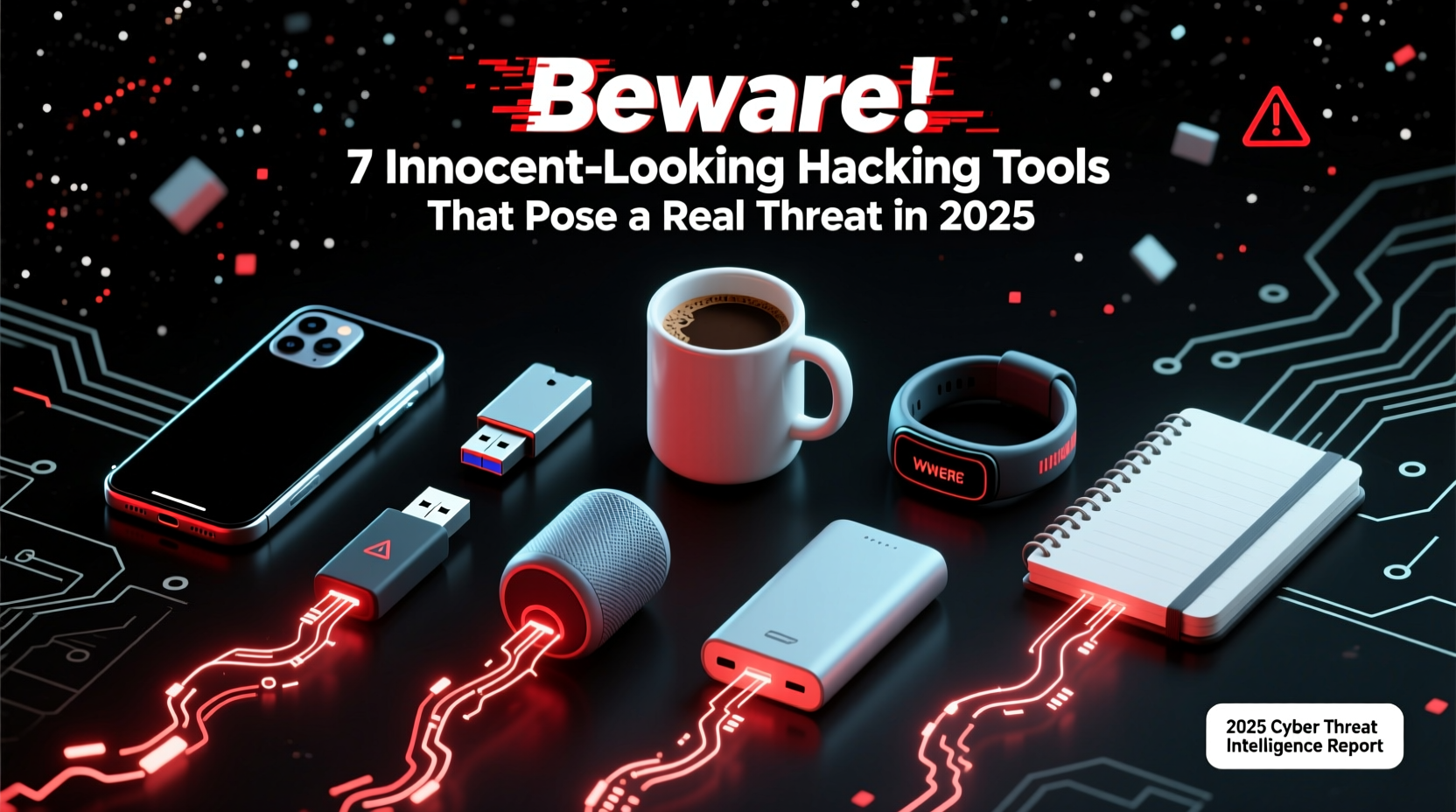Understanding the Evolving Threats of Hacking Tools Disguised as Everyday Devices
The digital age, while bringing numerous benefits, has also introduced a variety of security challenges. One of the primary ways to mitigate these risks is through awareness of potential threats. For many years, I have committed to understanding and elucidating these risks. While some threats are apparent, such as using strong passwords or avoiding dubious software downloads, others are subtler but equally menacing. This article delves into some insidious tools designed for security testing but often misappropriated for malicious purposes.
The Hidden Threat of Everyday Technology
Many modern hacking tools masquerade as benign gadgets or accessories. This deceptive appearance makes them exceptionally dangerous as they are easily overlooked. Though initially intended for professionals in cybersecurity and penetration testing, these tools can be repurposed by malicious actors for various nefarious activities.
1. Flipper Zero
 At first glance, the Flipper Zero resembles a toy, akin to a digital pet like the Tamagotchi. However, its playful exterior belies its capabilities as a versatile cybersecurity tool. Equipped with a range of features including an infrared transceiver, sub-GHz antenna, and NFC/RFID utilities, the Flipper Zero can interact with and manipulate a broad spectrum of devices. Whether cloning RFID cards or automating keystrokes on a connected computer, its applications are vast and varied.
At first glance, the Flipper Zero resembles a toy, akin to a digital pet like the Tamagotchi. However, its playful exterior belies its capabilities as a versatile cybersecurity tool. Equipped with a range of features including an infrared transceiver, sub-GHz antenna, and NFC/RFID utilities, the Flipper Zero can interact with and manipulate a broad spectrum of devices. Whether cloning RFID cards or automating keystrokes on a connected computer, its applications are vast and varied.
2. O.MG Cables
 What appears to be an ordinary charging cable is, in fact, a sophisticated hacking device. Concealed within the connector of an O.MG cable is a microcontroller that can execute commands upon connection to a device. This stealthy 'keyboard' can steal data, introduce malware, or even self-destruct to its default cable functionality, obscuring its dual-purpose nature. O.MG cables underscore the importance of vigilance with everyday technology.
What appears to be an ordinary charging cable is, in fact, a sophisticated hacking device. Concealed within the connector of an O.MG cable is a microcontroller that can execute commands upon connection to a device. This stealthy 'keyboard' can steal data, introduce malware, or even self-destruct to its default cable functionality, obscuring its dual-purpose nature. O.MG cables underscore the importance of vigilance with everyday technology.
3. USBKill
USBKill devices, while appearing as unassuming USB drives, hold the destructive power to incapacitate electronics by discharging high voltage through a connected device. This can permanently damage computers, smartphones, and a variety of other electronic devices. USBKill serves as a stark reminder of the potential risks associated with unaware consumer technology interactions.
4. USB Nugget
Disguised under the guise of an adorable keychain, the USB Nugget is an efficient tool for deploying targeted cyber attacks. Featuring an ESP32-S2 Wi-Fi chipset, it enables remote operation, granting attackers the ability to exploit target systems without needing physical proximity. This represents a significant threat vector in scenarios where devices are left unattended.
5. Wi-Fi Pineapple
The Wi-Fi Pineapple, with its futuristic design, is a formidable product capable of executing sophisticated wireless network attacks. Primarily used to set up rogue access points, this device facilitates data interception and credential harvesting. Its capabilities in executing man-in-the-middle attacks make it a critical study case in understanding wireless network vulnerabilities.
6. USB Rubber Ducky
Echoed in popular culture, the USB Rubber Ducky leverages the inherent trust computers place in peripheral devices. It mimics keyboard input, automating complex command sequences that can compromise systems. Its discrete form allows it to remain undetected, posing significant risks in environments where hardware is routinely shared or publicly exposed.
7. LAN Turtle
 The LAN Turtle, though resembling a standard USB Ethernet adapter, hosts tools capable of extensive network reconnaissance. It can silently log data, execute DNS spoofing, and alert operators to specific traffic, underscoring the importance of physical security in network infrastructures
The LAN Turtle, though resembling a standard USB Ethernet adapter, hosts tools capable of extensive network reconnaissance. It can silently log data, execute DNS spoofing, and alert operators to specific traffic, underscoring the importance of physical security in network infrastructures
Bonus: O.MG Unblocker
The O.MG Unblocker is another unassuming device that belies its true function. Similar in appearance to a standard data blocker, it is capable of data theft and executing malicious payloads. This tool exemplifies the importance of maintaining strict control over the devices connected to personal and professional networks.
Concluding Insights on Cybersecurity Measures
In a world increasingly dominated by interconnected devices, the line between convenience and vulnerability grows finer. Understanding and mitigating the risks posed by innocuous-seeming technology is critical. Users must cultivate a cautious approach to device connectivity, complemented by robust security practices, to safeguard personal and professional data.
| Device | Appearance | Potential Risk |
|---|---|---|
| Flipper Zero | Child's toy-like; digital pet | RFID cloning, remote keystrokes |
| O.MG Cables | Standard charging cable | Data theft, malware planting |
| USBKill | USB drive | Device destruction via electrical charge |
| USB Nugget | Keychain toy | Remote malicious payloads |
| Wi-Fi Pineapple | Router-like | Rogue access point creation, data interception |
| USB Rubber Ducky | USB flash drive | Keystroke injection |
| LAN Turtle | Ethernet adapter | Network monitoring, data exfiltration |
| O.MG Unblocker | Data blocker | Data manipulation and theft |
As we continue to integrate new technologies into our daily lives, the importance of cybersecurity cannot be overstated. Awareness and vigilance are the frontline defenses against these hidden threats. It is crucial to remain informed and equipped to deal with the evolving landscape of cyber threats.











 浙公网安备
33010002000092号
浙公网安备
33010002000092号 浙B2-20120091-4
浙B2-20120091-4